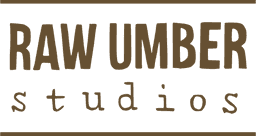Portrait Painting with Anastasia Pollard (Sep 2025)
Painting a portrait can be overwhelming at first. In this course, you will learn a structured, reproducible approach, starting by blocking in big shapes and then gradually moving to the details. You will gain confidence in tackling this complex subject and improve your observational skills along the way.
This three-day workshop is ideal for artists of all levels who would like to gain experience in painting the portrait from life in oils. No experience is necessary.
What will I learn?
- How to create a portrait from start to finish
- How to achieve a realistic likeness
- The importance of gesture and anatomy in portraiture
- The importance and principles of drawing, values, edges and colours
- How to mix colours and paint realistic flesh tones
- Which brushes to use when, and how
Participants will work on a single portrait over the course of the three days. Depending on your experience and goals you will have the choice of one of the following:
a) using a limited palette (the 'Zorn' palette). This constraint of using only red, yellow, black and white lets you create surprisingly accurate flesh tones, while simultaneously reducing the complexity of colour mixing
or
b) using a full colour palette
"Great setting, great teacher, great support; hard to fault. I would have loved it to go on longer... As it is, it's challenging yet accessible to all. I couldn't be happier. Even the couches are great!" - Christopher Ronus
Who is the tutor?
This course is taught by Anastasia Pollard. Anastasia studied at the Pennsylvania Academy of Fine Arts and Florence Academy of Art. Her work has been included in the annual exhibitions of the Royal Society of Portrait Painters and has featured in the BP Portrait Award in 2006, 2007, 2009, 2012 and 2017. Anastasia is a member of The Royal Society of Portrait Painters.
How many students will there be?
There is a maximum of 12 participants, and the tutor will customise the course according to your individual needs.
Materials list
- I recommend bringing 2x 12”x16” boards, canvases, or panels-prepared with a thin, light grey tone. I do this with acrylic paint. I usually use a combination of white, black and burnt umber to make a light grey
- Palette- at least 12”x 16”, either wooden, glass or grey paper palettes
- 2 offset palette knives
- Assortment of filbert-shaped brushes- I like Pro-arte Sterling White synthetic filberts and Rosemary Ivory filberts, sizes 2, 4, 6, 8
- Sansodor or Zest it or Gamsol. Please note that turpentine isn’t permitted, only odourless solvents
- Medium- optional, I recommend a mix of half solvent and half linseed oil, or Winsor and Newton artist’s painting medium.
Oil colours (required)
- Titanium White
- Raw Umber
- Ivory Black
- Yellow Ochre- I recommend Winsor Newton Yellow Ochre Pale or Schminke Yellow Ochre Attish, or Michael Harding Transparent Yellow Oxide.
- Cadmium Red- an expensive pigment, but a little goes a long way.
- If looking for a less expensive alternative, I recommend Winsor Red by Winsor and Newton. I do not recommend paints labelled “Cadmium Red Hue”. Also, be sure not to buy Cadmium Red Deep as it is too blue-based.
Oil Colours (Optional)
- Transparent Red Oxide
- Ultramarine Blue or Cobalt Blue
- Permanent Alizarin Crimson or Permanent Magenta
- Winsor Newton Olive Green
- Indian yellow
If you have any questions, please see our frequently asked questions or contact us.
